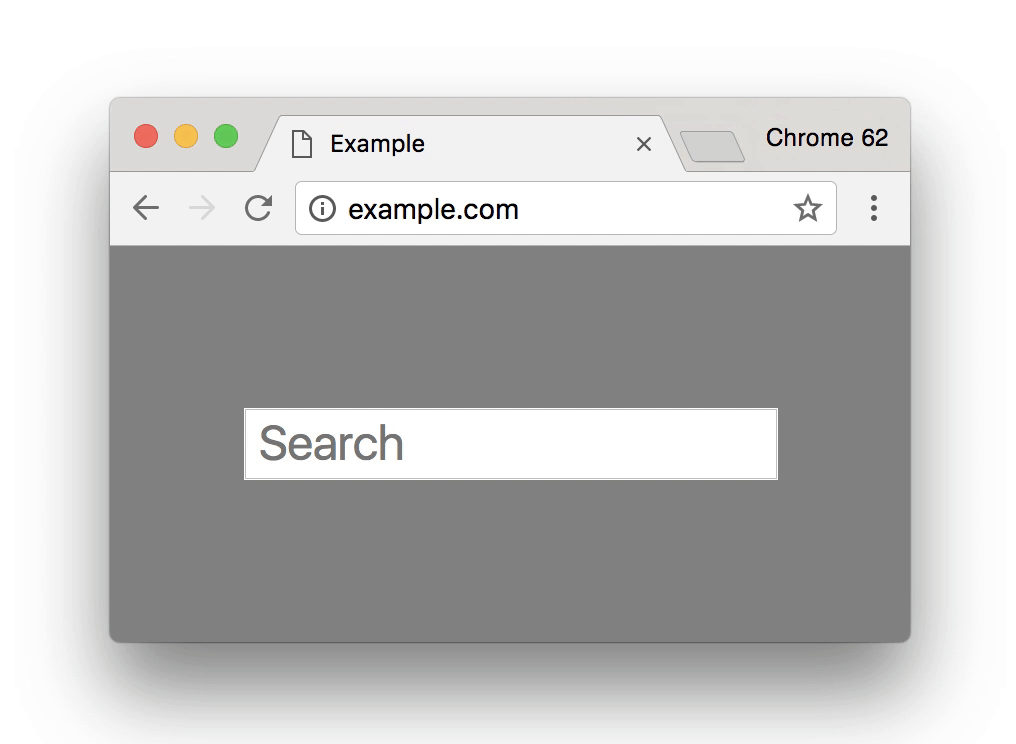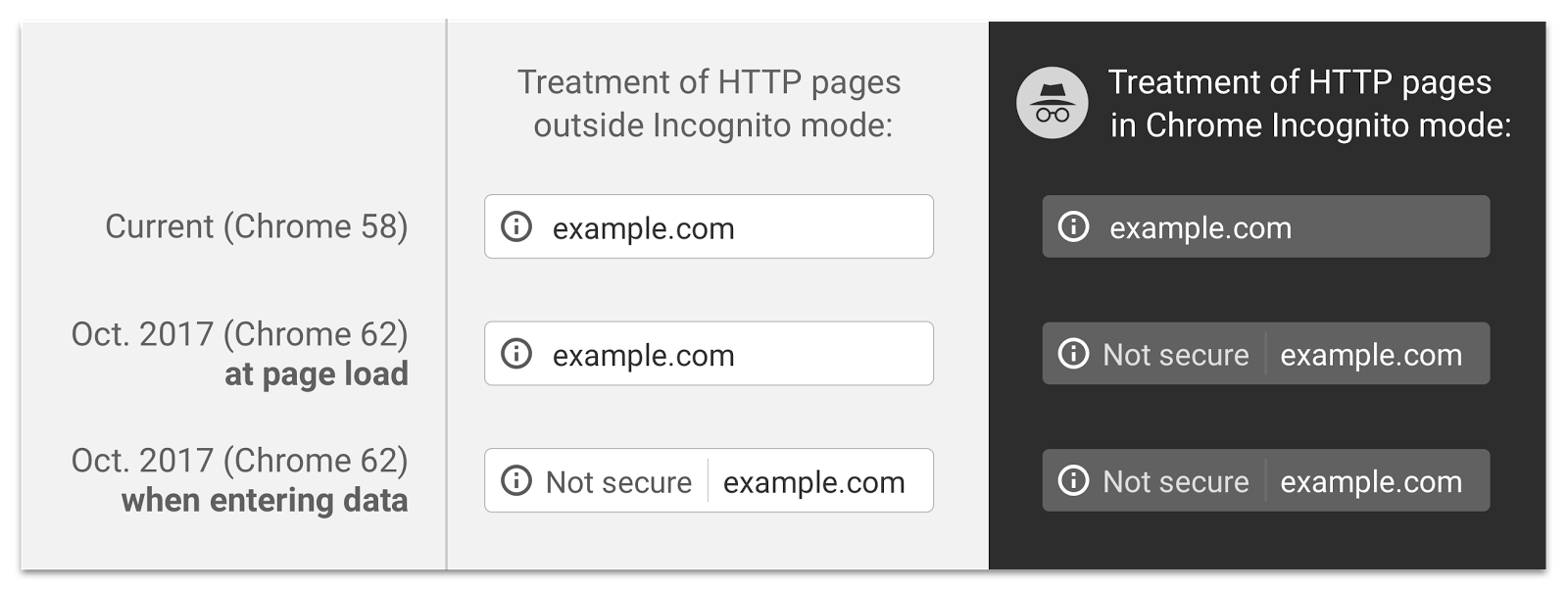Google Chrome will continue to “tighten the screws” (from October)
However, for whom this news will seem to tighten the screws, and for whom - scaring users, but the company Goolge, as promised, is going to please us with the next changes in the behavior of the Google Chrome browser in terms of notifying the user about what site he visits.
If earlier the conversation was about that the pages, the contents of the password entry field or credit card number, and the sending data on http (not https) were marked as unsafe in the address bar, then recent changes suggest marking all http pages with input fields as unsafe, also all http pages when viewing them in incognito mode.
 The last change was introduced from Chrome 56, and it gave, according to Google, a 23% reduction in the share of transitions to http-pages with password and / or credit card input fields (data are taken only from the desktop version of the browser).
The last change was introduced from Chrome 56, and it gave, according to Google, a 23% reduction in the share of transitions to http-pages with password and / or credit card input fields (data are taken only from the desktop version of the browser).
')
A new step by Google in ensuring the safety of transmitted user data is planned to be made from version 62, which is scheduled for release in October 2017.
A new type of omnibox, depending on the situation, is planned as follows:

As can be seen, the differences are small, however, according to common thinking, they are rather useful to users. At least, this indicator will encourage site owners (most likely, visited sites) to switch to https, and this, according to the authors of the change, will ensure the transfer of user data to the site without being able to intercept them along the way.
If earlier the conversation was about that the pages, the contents of the password entry field or credit card number, and the sending data on http (not https) were marked as unsafe in the address bar, then recent changes suggest marking all http pages with input fields as unsafe, also all http pages when viewing them in incognito mode.

')
A new step by Google in ensuring the safety of transmitted user data is planned to be made from version 62, which is scheduled for release in October 2017.
A new type of omnibox, depending on the situation, is planned as follows:

As can be seen, the differences are small, however, according to common thinking, they are rather useful to users. At least, this indicator will encourage site owners (most likely, visited sites) to switch to https, and this, according to the authors of the change, will ensure the transfer of user data to the site without being able to intercept them along the way.
Source: https://habr.com/ru/post/357330/
All Articles